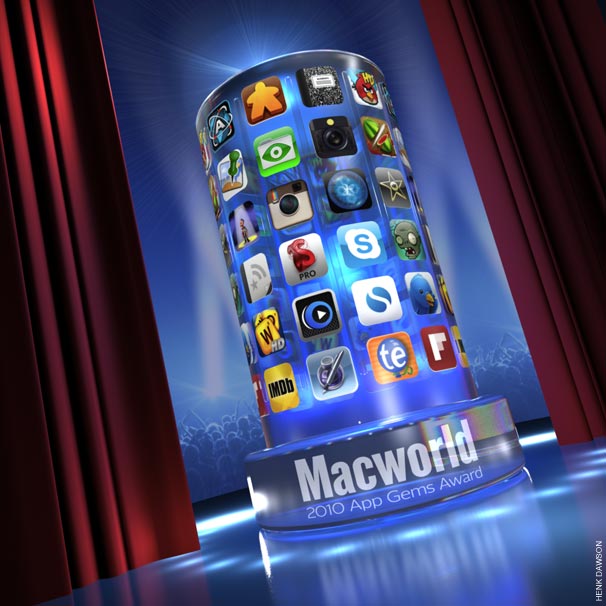
The Army wants to issue every soldier an iPhone or Android cellphone it could be a soldier's choice. And to top it off, the Army wants to pay your monthly phone bill.
To most soldiers, it sounds almost too good to be true, but it's real, said Lt. Gen. Michael Vane, director of the Army Capabilities Integration Center (ARCIC). He said the Army would issue these smartphones just like any other piece of equipment a soldier receives.
"One of the options potentially is to make it a piece of equipment in a soldier's clothing bag," Vane said.
Efforts are underway around the Army to harness smart phones to revolutionize the way the service trains and fights.
Army-issued smartphones are already in the schoolhouse and garrison, or on post, in the hands of some students at Fort Leonard Wood, Mo.; Fort Lee, Va.; and at Fort Sill, Okla., under an Army program called Connecting Soldiers to Digital Applications. CSDA's next step, already underway at Fort Bliss, Texas, is testing for the war zone.
In February, the Army plans to begin fielding phones, network equipment and applications to the first Army brigade to be modernized under the brigade combat team modernization program. That test will not be limited to smart phones but will include any electronic devices that may be useful to troops.
"We're looking at everything from iPads to Kindles to Nook readers to mini-projectors," said Mike McCarthy, director of the mission command complex of Future Force Integration Directorate at Fort Bliss.
The Army plans to roll out wireless Common Access Card readers for the iPhone in January and for Android phones in April. This would give soldiers secure access to their e-mail, contacts and calendars.
At war, smartphones would let soldiers view real-time intelligence and video from unmanned systems overhead, and track friends and enemies on a dynamic map, officials said. But the Army must first work through the complex task of securing the data and the network before it sanctions smart phones on the battlefield.
The goal is for soldiers to get information when they need it, wherever they are.
"What we're doing is fundamentally changing how soldiers access knowledge, information, training content and operational data," McCarthy said. "The day you sign on to be a soldier, you will be accessing information and knowledge in garrison and in an operational environment in a seamless manner. We're using smart phone technologies to lead this."
Open to multiple phones
To date, the Army has not conducted testing of the concept over classified networks. The service first had to prove it could combine the phones and applications with a mobile infrastructure capable of offering service in an austere environment.
"We had to prove that we could make the electrons flow from one end to the other successfully," McCarthy said. "We took a little bit of license in not going over classified networks. Once it works, we can start working on the information assurance piece."
The Army is open to using multiple phones, according to Rickey Smith, the director of ARCIC-Forward.
"We're not wedded to a specific piece of hardware. We are open to using Palm Trios, the Android, iPhone or whatever else is out there," Smith said.
The Army probably won't develop its own phone or do much to alter the commercial phones it buys.
It would rather make minor tweaks and "ruggedize" existing phones, which as long as the phones' shapes and electronic guts aren't modified, will place them at close to retail prices, said Tony Fiuza of the Army's Communications-Electronics Research, Development and Engineering Center.
Vane said the Army is still figuring out the dollars and cents of buying smartphones and apps. One option, though, is giving the purchasing power to the soldier.
Soldiers could receive a monthly stipend what Vane called a "maintenance fee" to spend on both minutes and apps, allowing each soldier to personalize his phone with the training and tactical apps he needs.
"If you did it that way, the advantage would be to pay for the phone once and then you pay a maintenance fee to the soldier ... and then the soldier can buy whatever iPhone, Android or hardware that he or she likes," Vane said. "Then the challenge is just figuring out how we pay for the minutes each month."
Connected to combat
Army officials want soldiers to bring the phones to the war zone, where their intelligence sharing and communications capabilities could revolutionize battlefield tactics.
A widespread deployment of the phones to the battlefield could come as soon as next year, Vane said.
What the Army found is that soldiers with smartphones are more likely to collect data and share it.
Vane said he wants to use the phones to collect biometrics on enemy combatants.
"Can we connect this to biometrics? Well, that's the direction we're headed," he said.
The technology is there, but "the challenge will be to work through the policy issues of sharing data and information assurance," Vane said. "Army officials remain concerned of enemy forces hacking into the phones, but don't want that fear to paralyze the use of these phones."
Credits to USAToday
















